Sephora is a multinational chain of personal care and beauty stores that is known for offering a wide range of makeup products. In 2012, Sephora introduced Color IQ, a revolutionary technology that scans the skin's surface and assigns a scientifically precise color match for foundation, concealer, and other makeup that matches a customer's skin tone to more than 1,500 products.
The technology for Color IQ worked great. However, in the years using Color IQ, it became apparent that the process of getting your Color IQ to getting a product that works for the customer had its limitations and needed improvement to provide a better customer experience. After a lively sales pitch to Sephora executives, Prolific Interactive was awarded the contract to improve Color IQ's experience for 2017.
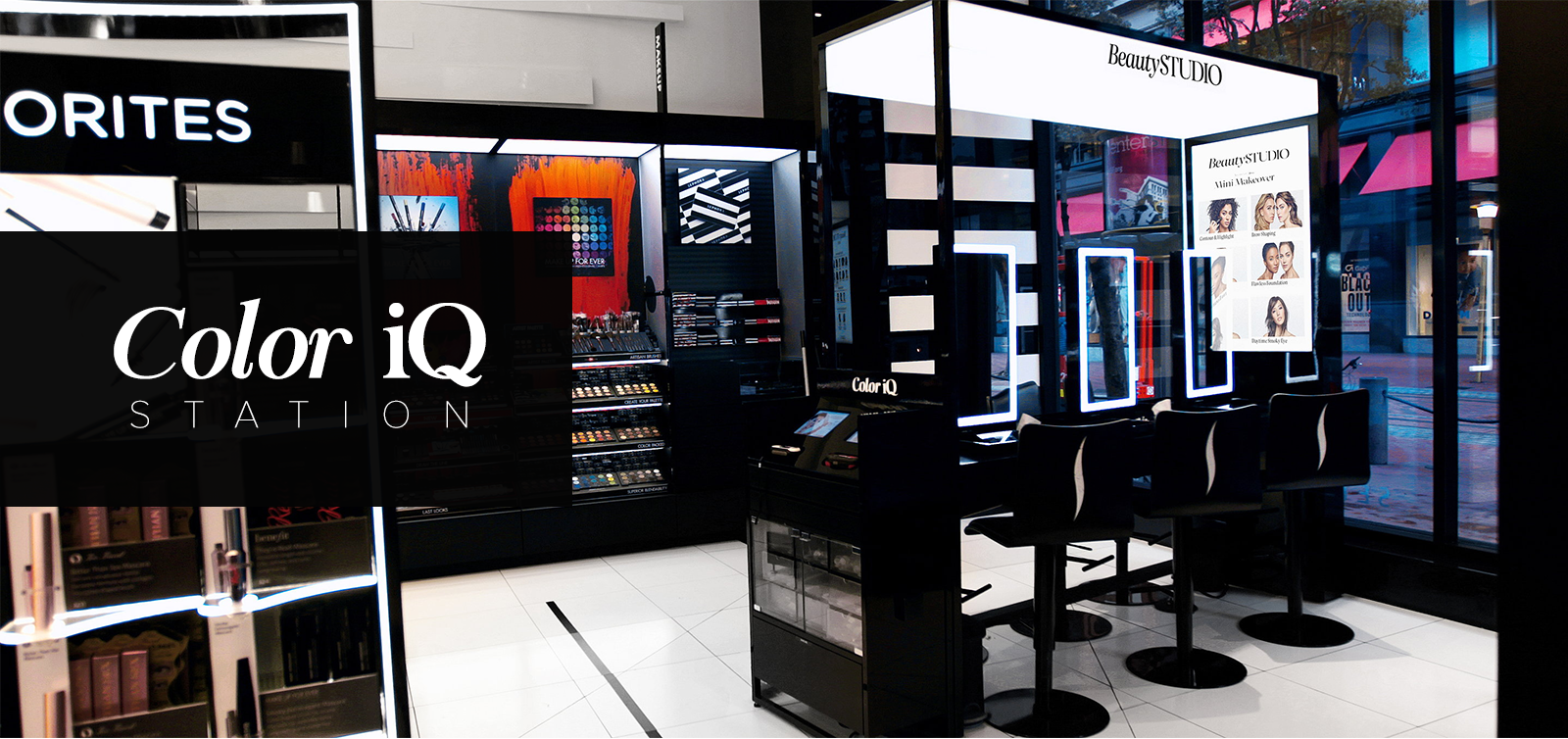
Sephora Store - San Francisco, CA
Sephora's Color IQ is an innovative beauty technology that scans the skin's surface to assign a scientifically precise color match for foundation, concealer, and more. The technology aims to help customers find the perfect shade match to enhance their natural beauty.
Sephora's Color IQ addressed the challenge of finding the right shade of foundation for different skin tones. The technology was revolutionary and received positive feedback from customers, but it was not perfect.
Sephora recognized that there was an opportunity to improve the process to enhance the customer experience and drive customers to sign up to Sephoras Beauty Inside Program, but they were not sure how.
Sephora executives and our team prioritized both the customer and employees at Sephora.
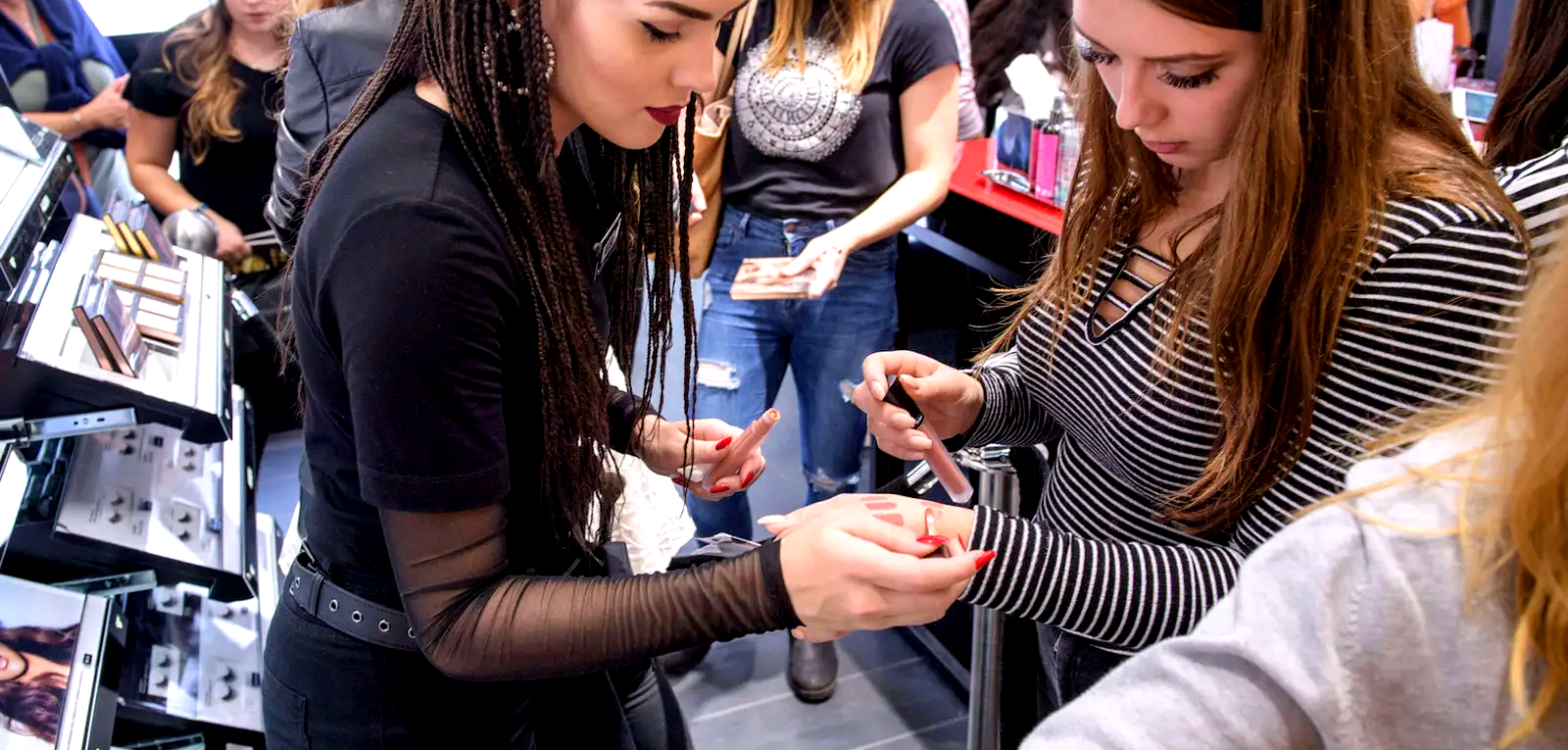
An employee helping a customer at Sephora
Prolific Interactive, a product agency, involved a cross-functional team, including one product manager, one copywriter, one UX designer, and myself, a senior product designer. We worked alongside four executives at Sephora to collaborate and improve the Color IQ process to deliver a more personalized experience for Sephora customers.
The primary goal of the project was to improve the Color IQ process by providing a better experience for customers and employees. The team was tasked to determine and prioritize the biggest problems that could be improved easily within the entire Color IQ experience, from scan, to finding products both in store, in the app, or online.
The secondary goal was to increase customer engagement and satisfaction by leveraging data and analytics provided by Sephora to increase signups towards the Sephora Beauty Insider Program by 15%-20%.
Sephora's Beauty Insider Program is a loyalty program designed to reward Sephora customers for their purchases and engagement with the brand. Customers who sign up for the program earn points for their purchases and can redeem those points for exclusive rewards, such as beauty products, makeup tutorials, and other perks.
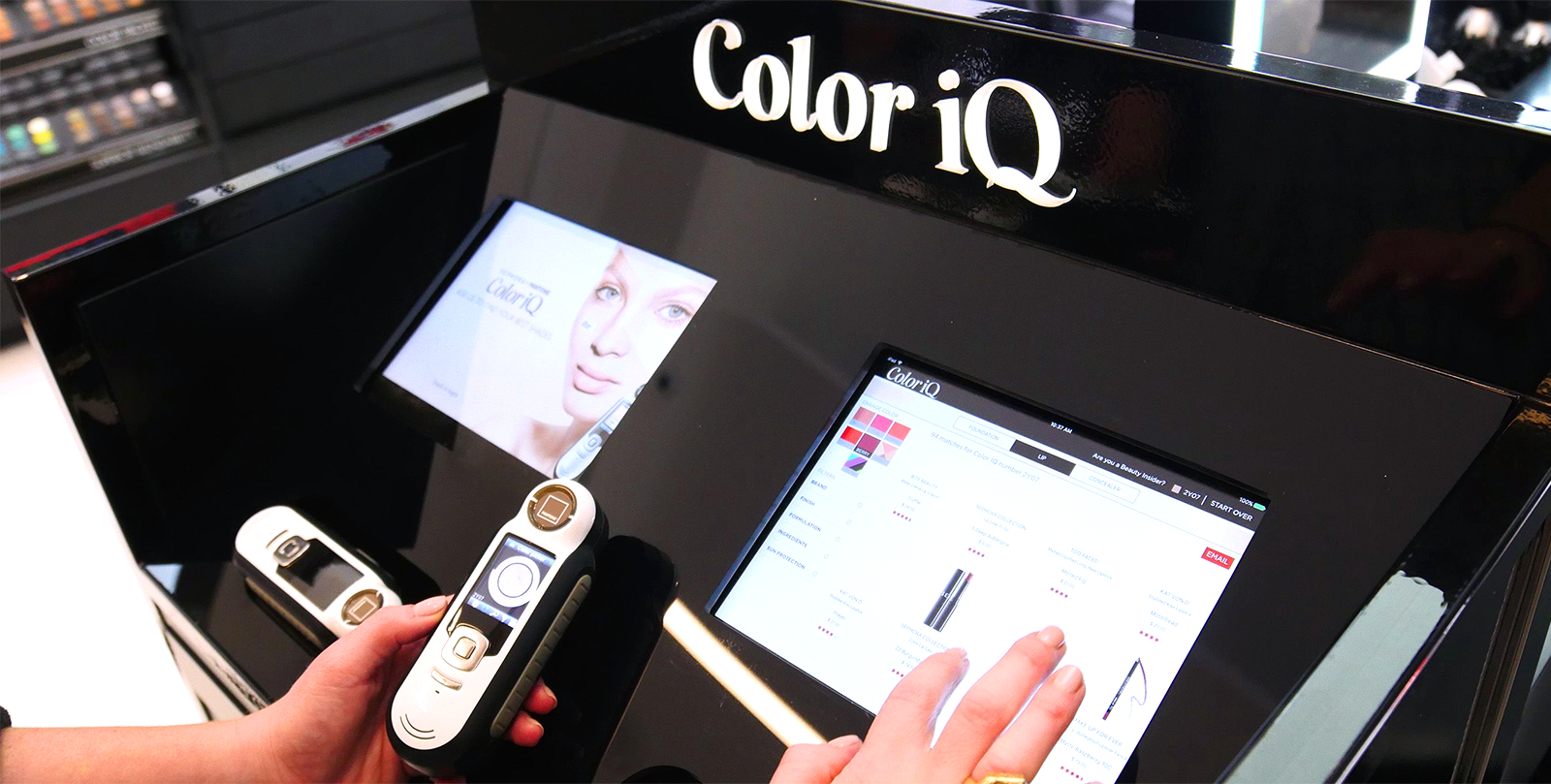
The Color IQ Station w/ PANTONE® scanner
The team followed a user-centered process to improve the Color IQ experience. The process involved the following:
Research - User Interviews
With proper scheduling and approval from Sephora corporate, we conducted user interviews at Sephoras flagship store in San Francisco.
With $20 Sephora gift cards in hand (provided by Sephora), we interviwed twenty employees and fifty customers with a questionaire and conversation over the course of 3 days. From these interviews, we recorded the answers and cataloged them into key pain points and insights.
Insights & pain points
Of the numerous candidates interviewed, we chose either the most common ones, or the ones that were most insightful. Aside from inaccurate color matches, they most insightful findings were:
• Color IQ codes are complicated and easy to forget. (e.g. 2Y09, 5R04). Customers want a Color IQ 'ID' they can easily remember.
• "I have my color IQ code, but the recommendations don't match my skin tone" - Sephora Customer #12
• Customers have a tough time understanding that they need to schedule to get their Color IQ done.
• Customers Color IQ's aren't tied to their account or to their Beauty Insider Program.
• Customers feel like they are a different Color IQ and cannot change their Color IQs once assigned. Some Color IQ's offer very little recommendations or too many.
• Customers feel better informed once they see the entire grid of Color IQ colors.
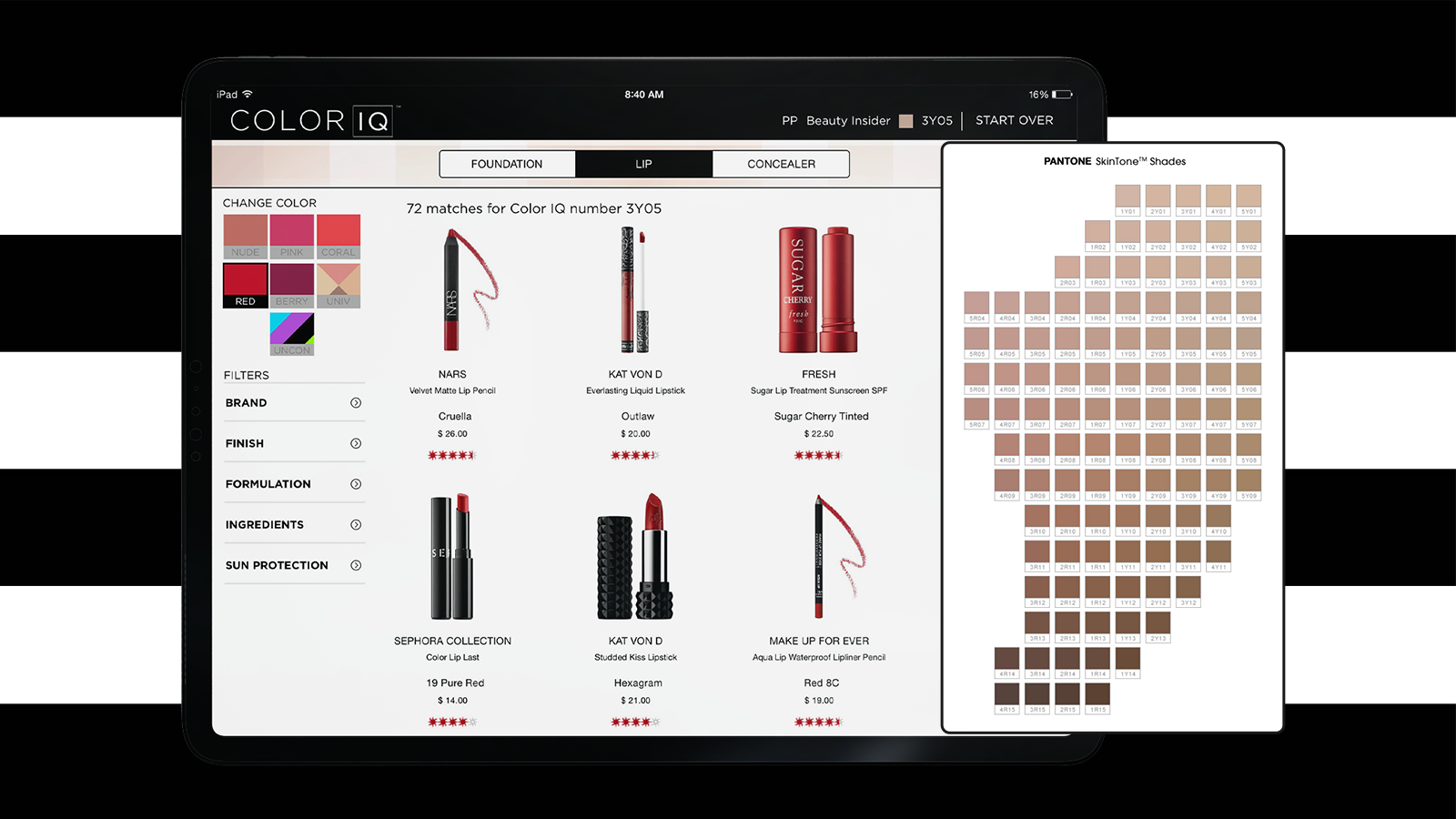
Color IQ tablet interface with Pantone color grid
Scope prioritization
Our team prioritized and weighed out what was worth doing vs what wasn't.
High fidelity concepts to present to stakeholders
High fidelity concepts were made with the help of UX designers, copywriters, and product managers based on the priority list to present to key stakeholders.
Championing ideas and getting buy in from key stakeholders
We took the high fidelity concepts, and with the help of product managers, we presented our ideas to stakeholders to get their buy in.
Provide detailed handoffs to Sephora devs
From what was approved, we provided detailed mocks and specs of each solution that would be handed off to developers or executives at Sephora.
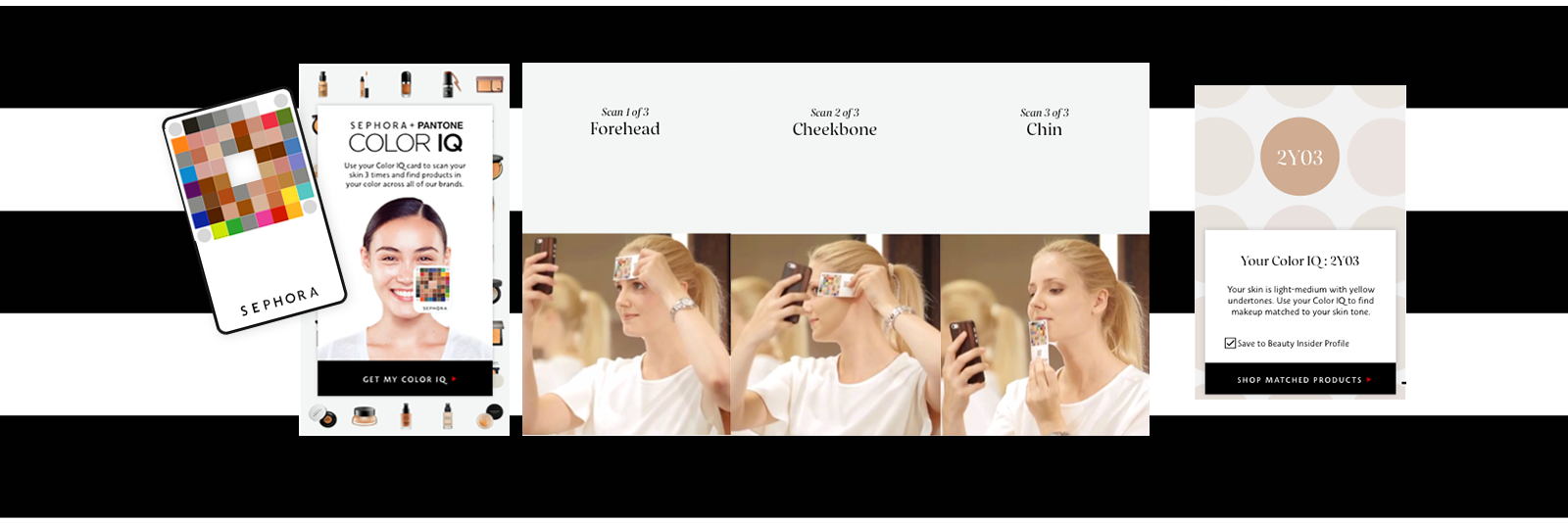
A HIFI concept - Scan yourself with a card from the app
Improving Sephora's Color IQ required a multi-pronged approach:
• Change the Color IQ nomenclature from a code to words and phrases with levels that people are familiar with.
• Add UI/UX to enable online scheduling, allowing customers to schedule a Color IQ session at a nearby store.
• Provide additonal training to employees of Sephora to capture a customers email after they went through the Color IQ process so Sephora could send them an invite to sign up to the Beauty Insider Program, incentivizing them to connect their Color IQ to their account.
• Add UI/UX to connect customers Color IQ to their Beauty Insider Program account.
• Add UI/UX to allow customers to easily change their Color IQ to favor what the they prefer.
Sephora's efforts to improve Color IQ paid off. The company reported an increase in customer satisfaction and a twenty one percent increase in signups after the improvements were implemented.
Improved user experience: The new Color IQ nomenclature simplified the process of customers remembering their Color IQ, resulting in a better experience. Sephora also received positive feedback from customers who appreciated the company's efforts to tie their Color IQ to an account, giving them more exposure to the Beauty Insider Program, specifically towards the rewards program.
Increased engagement and conversion rate: The new process provided customers to see their personalized product recommendations, resulting in more user signups, higher engagement within their app and a higher conversion rate towards signing up to the Beauty Insider Program.
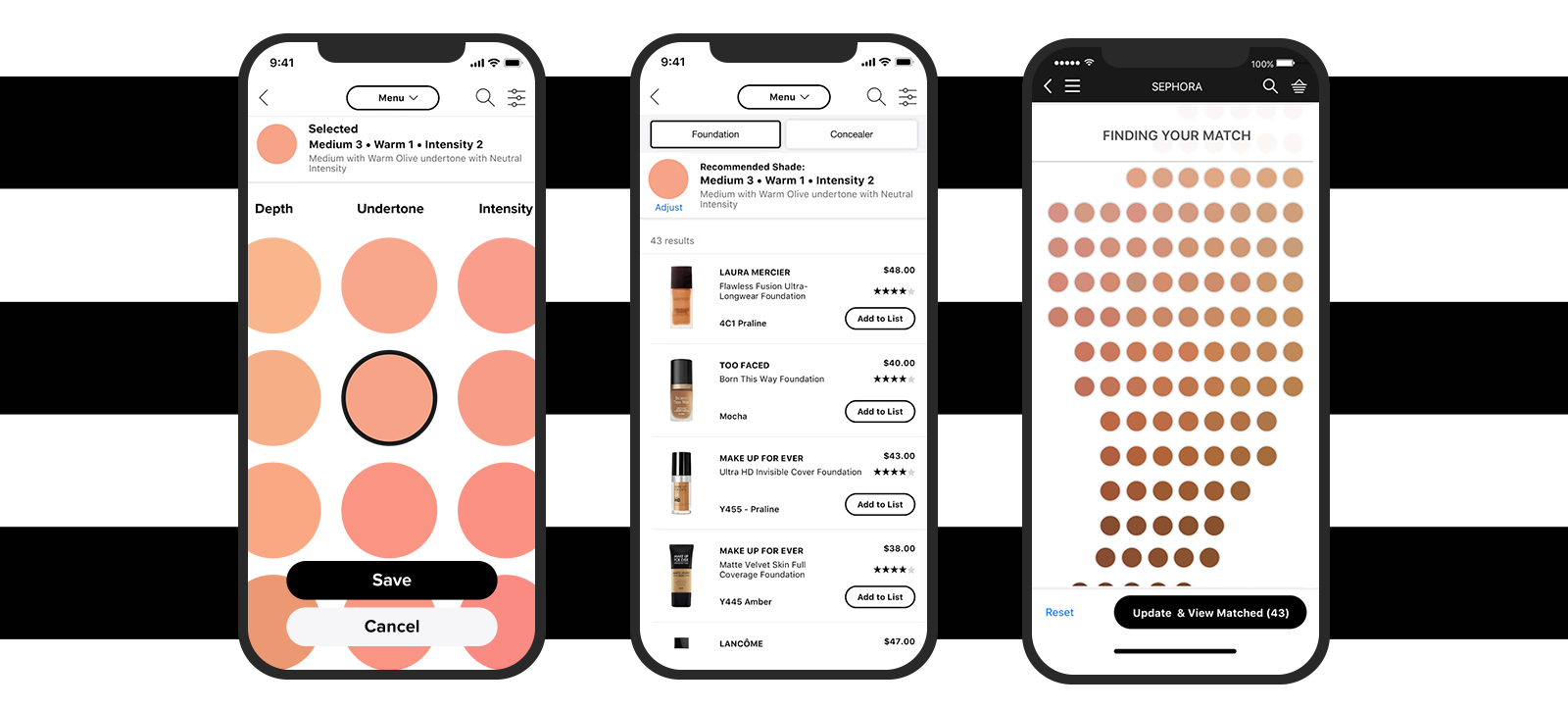
Examples of screens handed off to developers
The improvements made not only led to an increase in sales, signups and customer satisfaction but also demonstrated Sephora's commitment to providing an better shopping experience for all customers. It was an absolute honor to work on this project and gain a better understanding into the personal care and beauty market.
Sephora still has a ways to go to help all their customers. From providing recomendations for hyperpigmentated skin to integrating more artificial intelligence towards suggested products, the work we did is took the industry one step closer towards customers finding the right product for them to feel the most confident in their own skin. I am a Medium 3 Warm 2 with an Intensity of 2 in case you were wondering.
